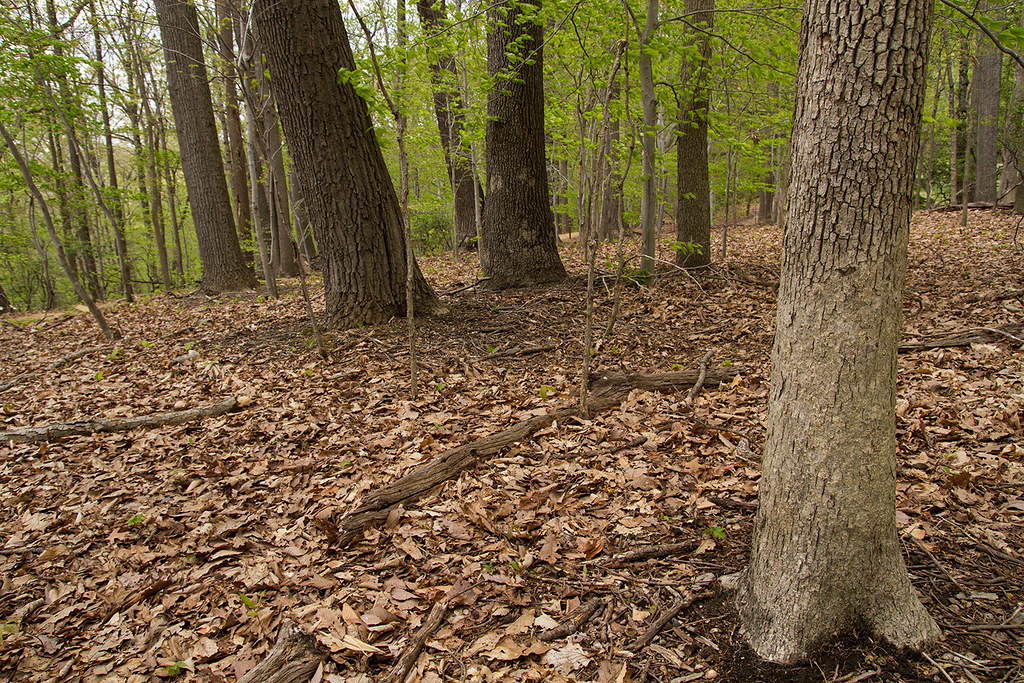
Bernd Blossey, Darragh Hare, and Don Waller have published a plea that America’s federal government take the lead in formulating a new national program on managing deer. Otherwise, they fear that deer populations will not be reduced to ecologically sustainable levels. I find their argument convincing and well-sourced. I agree that Americans need to figure out how to address this threat. (The full citation is at the end of this blog).
First, Blossey and colleagues describe the damage caused by overabundant deer:
- severe declines in populations of many native forest herbs and shrubs, probably including disappearing wildflowers;
- their replacement by non-native species that are less palatable;
- poor regeneration of many canopy hardwood species;
- decreased forest resilience, lowering forests’ ability to adapt to stressors, especially climate change;
- decreased ability of forests to deliver benefits that are of increasing value to many people;
- increased prevalence of wildlife and human diseases associated with the spread and size of growing tick populations; and
- people – and deer — killed vehicle accidents on roads.
The widespread impacts of white-tailed deer (Odocoileus virginianus) in forests of the East are well-documented (see my previous blogs for a few examples; scroll below the “Archives” to find “Categories”). Blossey and colleagues note examples of similar impacts in the West, attributed to elk (Cervus elaphus) and black-tailed and mule deer (Odocoileus hemionus).
The authors review the decimation of deer populations in earlier centuries and the efforts of state wildlife agencies to rebuild their populations during the 20th Century. The problem, in their view, is that federal and — especially — state wildlife agencies have retained their traditional focus on managing wildlife for recreational hunters. However, recreational hunters make up a small and shrinking proportion of all Americans. Many more people now engage in “non-consumptive” enjoyment of wildlife.

State agencies’ narrow focus might partly arise from fragmented authorities. Agencies other than wildlife departments are responsible for addressing some repercussions of overabundant deer. These include threats to human health, loss of agricultural crops.
For several reasons, Blossey and colleagues call for federal leadership. They think that only a national strategy can address, in a holistic way, the interrelated deer, human health, forest, and biodiversity crises. The strategy’s goal should be to protect species that are in decline because of over-browsing by deer and to avoid further declines in environmental and human health.
The authors reason that states are tied to traditional constituencies. Also, they have difficulty acting across jurisdictional boundaries. Second, few state wildlife agencies have authority to protect plant and invertebrate species. Yet these are the taxa most directly affected by overabundant deer. Blossey and colleagues point out that, of the ~1,300 species listed under the federal Endangered Species Act, 942 are plants and 287 are invertebrates.
They point out that deer also suffer the effects of overpopulation. Chronic wasting disease is spreading. It causes a slow, agonizing death of affected animals. Another 2.1 million deer are killed each year in vehicle crashes. [According to the World Animal Foundation, the current number of deer killed in traffic crashes is 1.8 million — 300,000 fewer.) Again, these deaths are often gruesome. Finally, the principal population “control” now is death by starvation in winter. This, too, is cruel.
Blossey and colleagues say that return of large predators, even where feasible, will not result in sufficient reduction in deer populations. Nor will encouragement of greater hunting pressure on does.
They note that the federal government owns nearly 30% of the United States’ terrestrial surface area. Management is divided among many agencies – National Park Service, Fish and Wildlife Service, Bureau of Land Management, USDA Forest Service, Department of Defense, and many smaller agencies. Management approaches vary. However, it would be possible to bring them into agreement – although, in some cases, this would require new legislation.
Another issue requires resolution: federal agencies’ authority to manage wildlife on federal land.. The states have repeatedly claimed constitutional and legal authority to manage (vertebrate) wildlife on the federal lands within their borders. This assertion was countered years ago by Nie et al. (2017):
‘Federal land management agencies have an obligation, not just the discretion, to manage and conserve fish and wildlife on federal lands. … [M]ost states have not addressed the conservation obligations inherent in trust management; rather, states wish to use the notion of sovereign ownership as … a source of unilateral power but not of public responsibility. Furthermore, the states’ trust responsibilities for wildlife are subordinate to the federal government’s statutory and trust obligations over federal lands and their integral resources.’
Blossey and colleagues assert that managing wildlife (typically defined as mammals, birds, and fish) is much broader than establishing hunting seasons or methods. Furthermore, the concept of “public trust resources” means resources should be managed for all citizens, not just the fewer than 10% of US residents who hunt. A growing proportion of society expects this management to support healthy and diverse environments.
The authors stress that reducing deer overpopulations is necessary to meet numerous policy goals. These include fulfilling obligations under international treaties related to climate change, invasive species, and threatened species; restoring and conserving the nation’s forests to provide habitat; and adopting “nature-based” climate adaptations, such as carbon sequestration. They express the hope that recent presidential mandates to better quantify and value natural assets will increase awareness of the harm caused by deer overpopulation. Their proposed national strategy would develop goals and metrics to match specific environmental and human health outcomes.
Of course, management of deer must extend beyond federal property lines. This will require cooperation among states, Tribes, and private landowners.
The paper proposes the North American Waterfowl Management Plan as a model. Under this scheme the US Fish and Wildlife Service works with states, tribal governments, Mexico, and Canada to ensure accurate information on waterfowl populations a to calculate harvest levels. States implement their assigned quotas through their own regulations. Waterfowl hunters purchase Duck Stamps to fund the monitoring efforts. This program has worked well for most species covered by the program. Waterfowl are one of the few bird groups that have not declined dramatically.
Reducing deer populations will probably require lethal control. Studies indicate that at least 60% of does must be removed from a population to reduce herd sizes over time. Other means have been attempted at regional or larger landscape levels, such as sterilization, fertility control. These methods have failed even when paired with recreational hunting. Lethal approaches will probably distress many people. However, Blossey, Hare, and Waller believe the program would be supported if it is understood to be undertaken with the goal of improving the health of both humans and also the environment.
In the end, Blossey, Hare, and Waller say they are not willing to leave the killing to cars, disease, and starvation. They emphasize our moral responsibility to protect humans and the many other species that rely on diverse ecosystems. Our policies and choices created the problem, so we must try to correct it.
SOURCES
Blossey. B., D. Hare, and D.M. Waller, 2024. Where have all the flowers gone? A call for federal leadership in deer management in the US. Front. Conserv. Sci. 5:1382132. doi: 10.3389/fcosc.2024.1382132
Nie, M., C. Barns, J. Haber, J. Joly, K. Pitt and S. Zellmer. 2017. Fish and Wildlife Management on Federal Lands: Debunking State Supremacy. Environmental Law, Vol. 47, no. 4 (2017).
Posted by Faith Campbell
We welcome comments that supplement or correct factual information, suggest new approaches, or promote thoughtful consideration. We post comments that disagree with us — but not those we judge to be not civil or inflammatory.
For a detailed discussion of the policies and practices that have allowed these pests to enter and spread – and that do not promote effective restoration strategies – review the Fading Forests report at http://treeimprovement.utk.edu/FadingForests.htm
or
